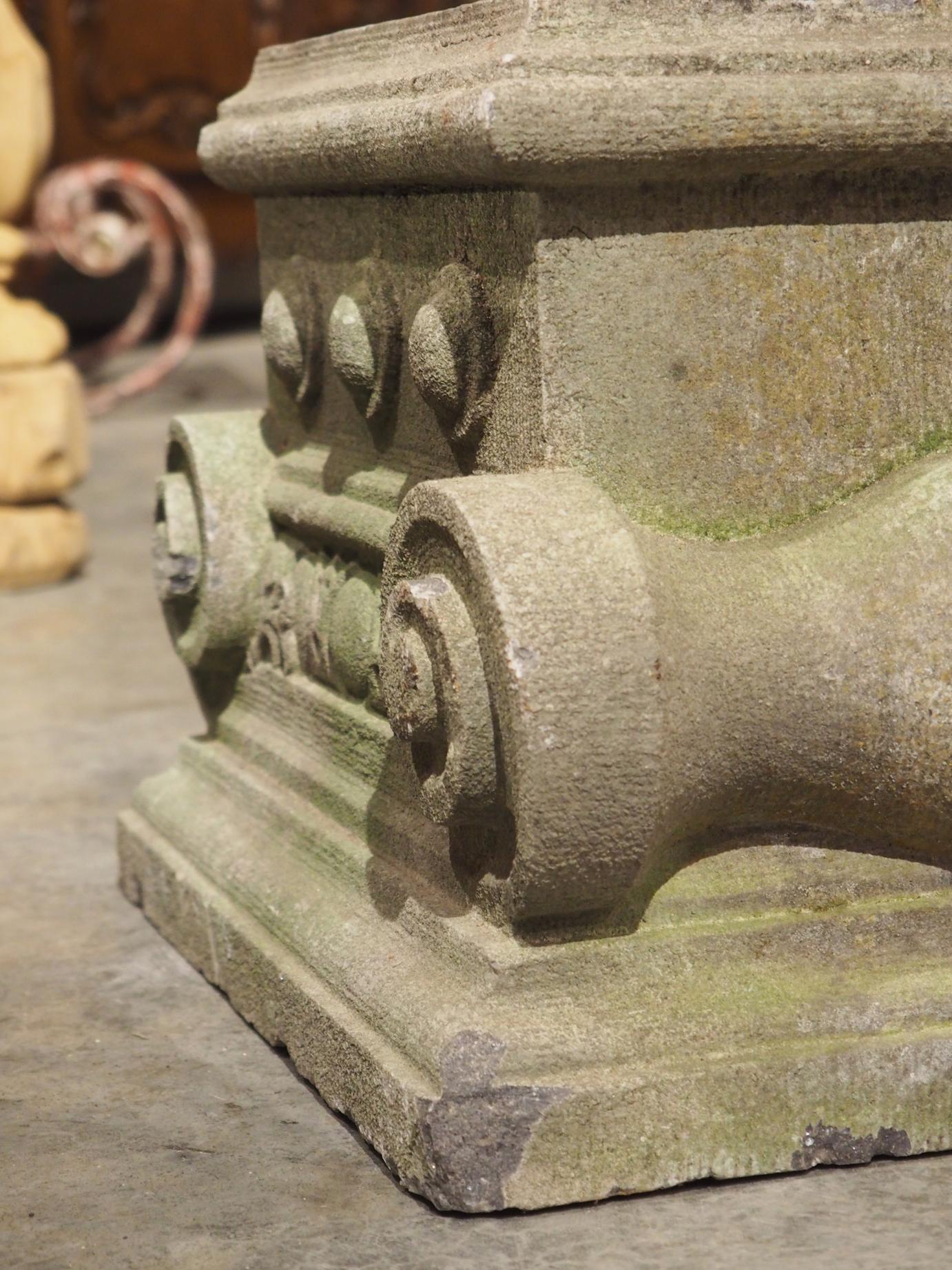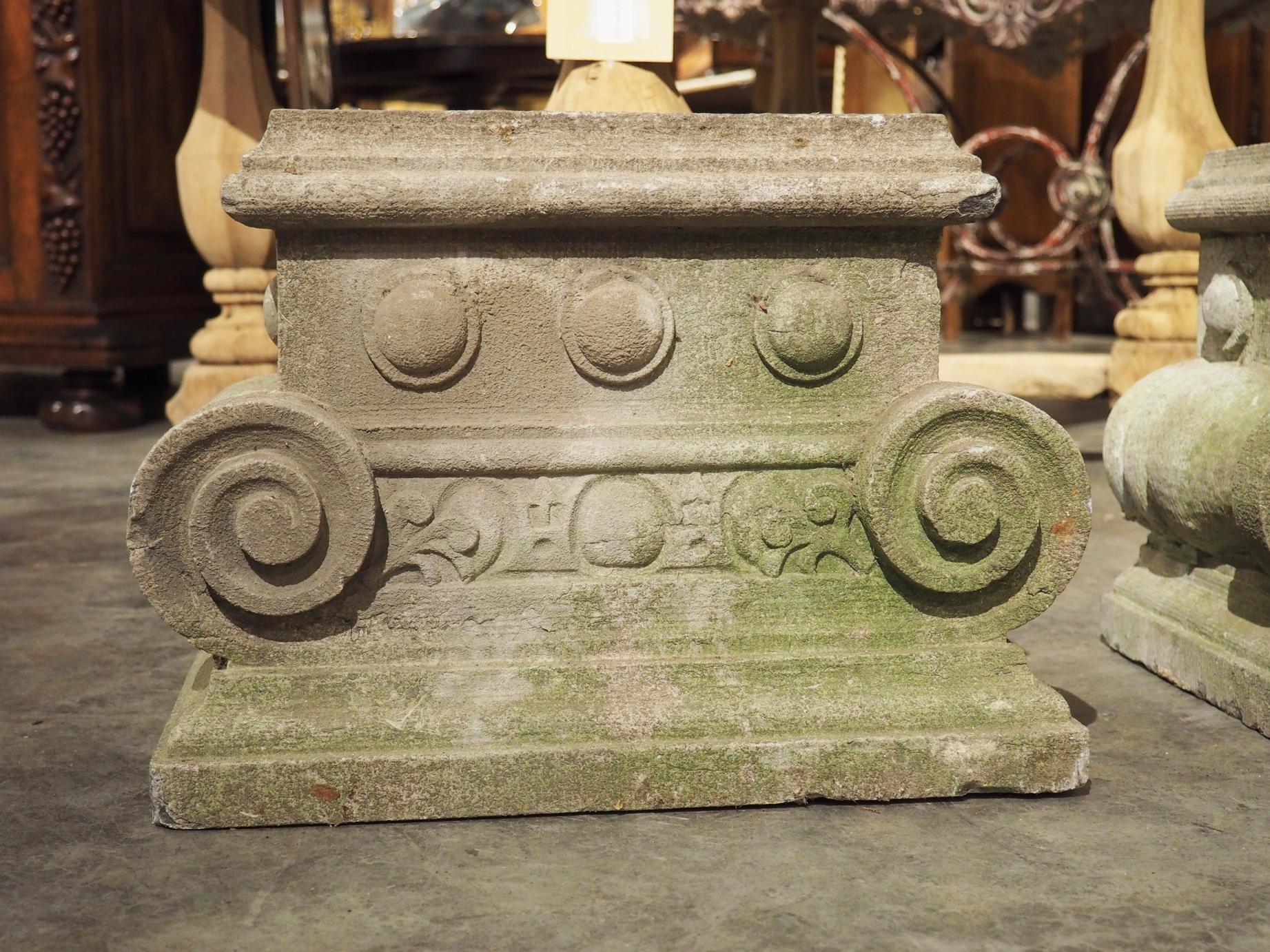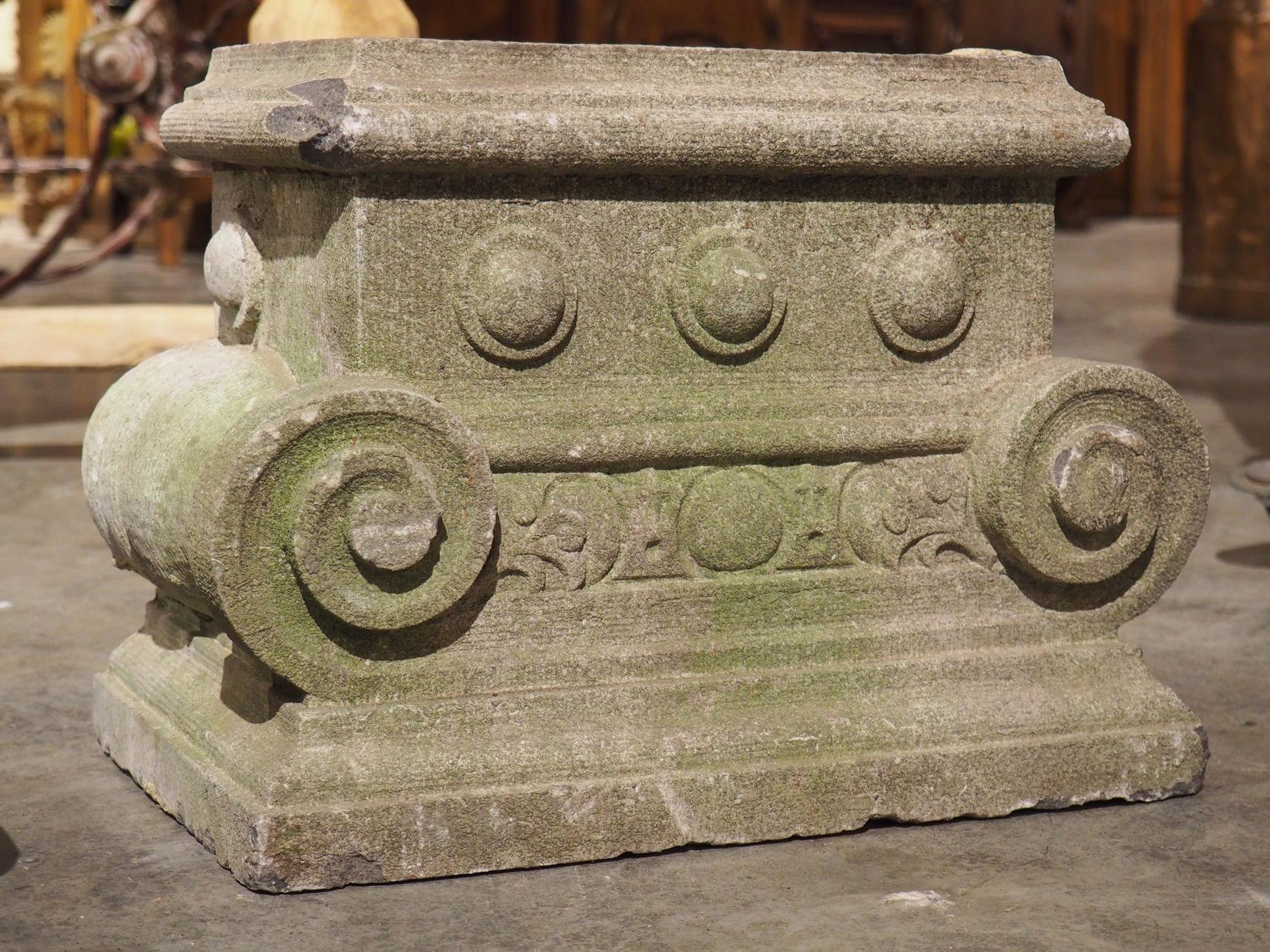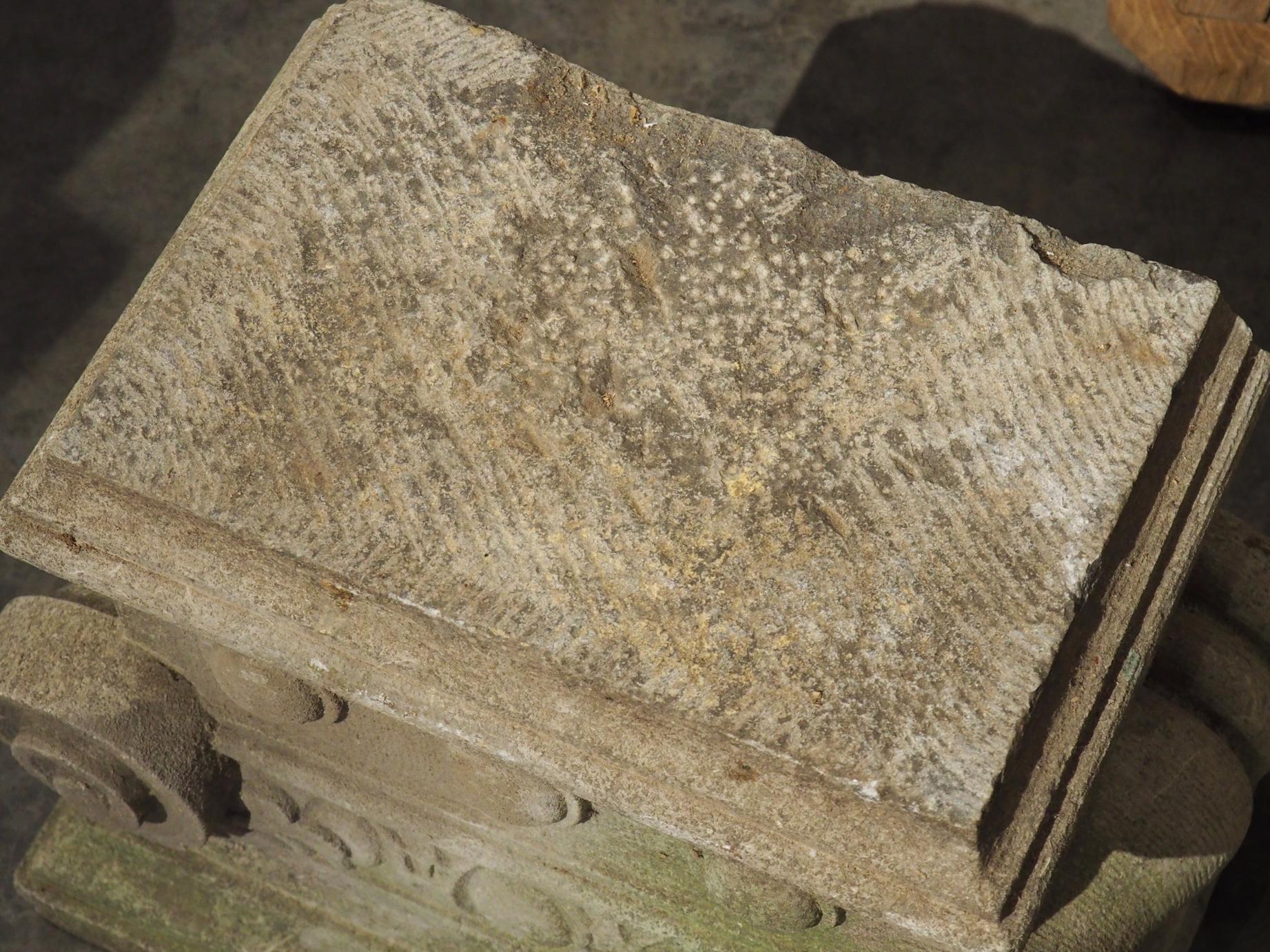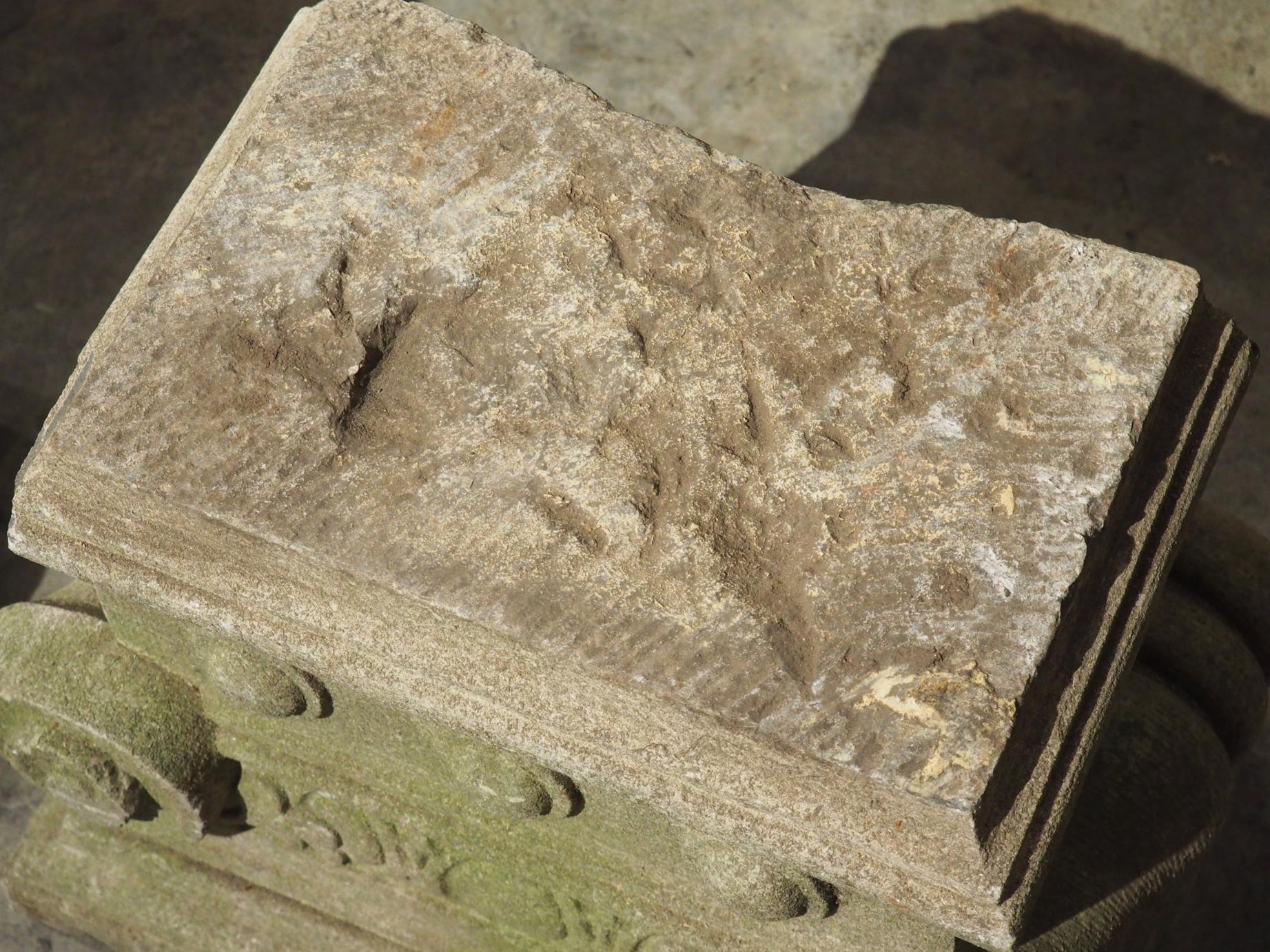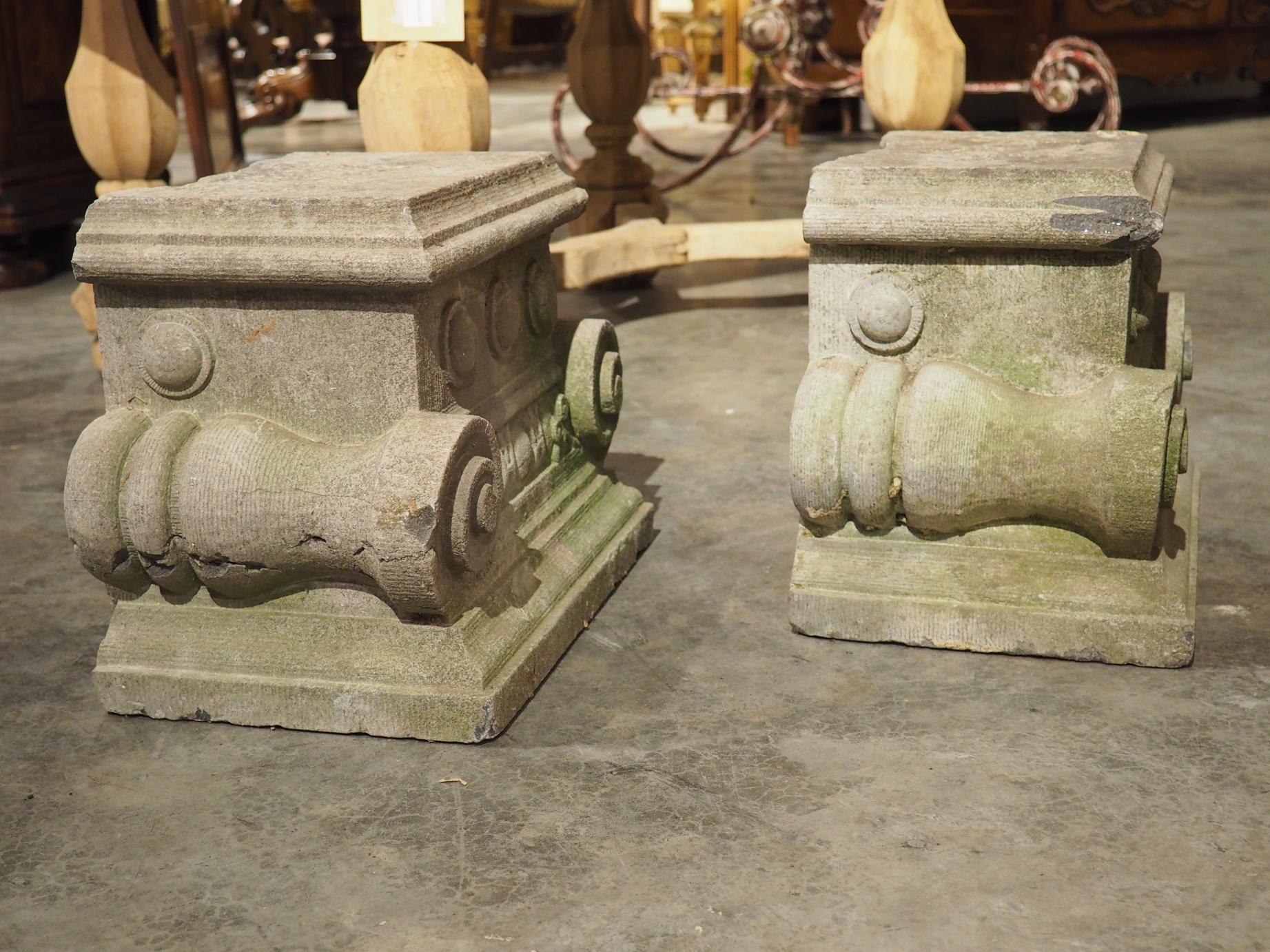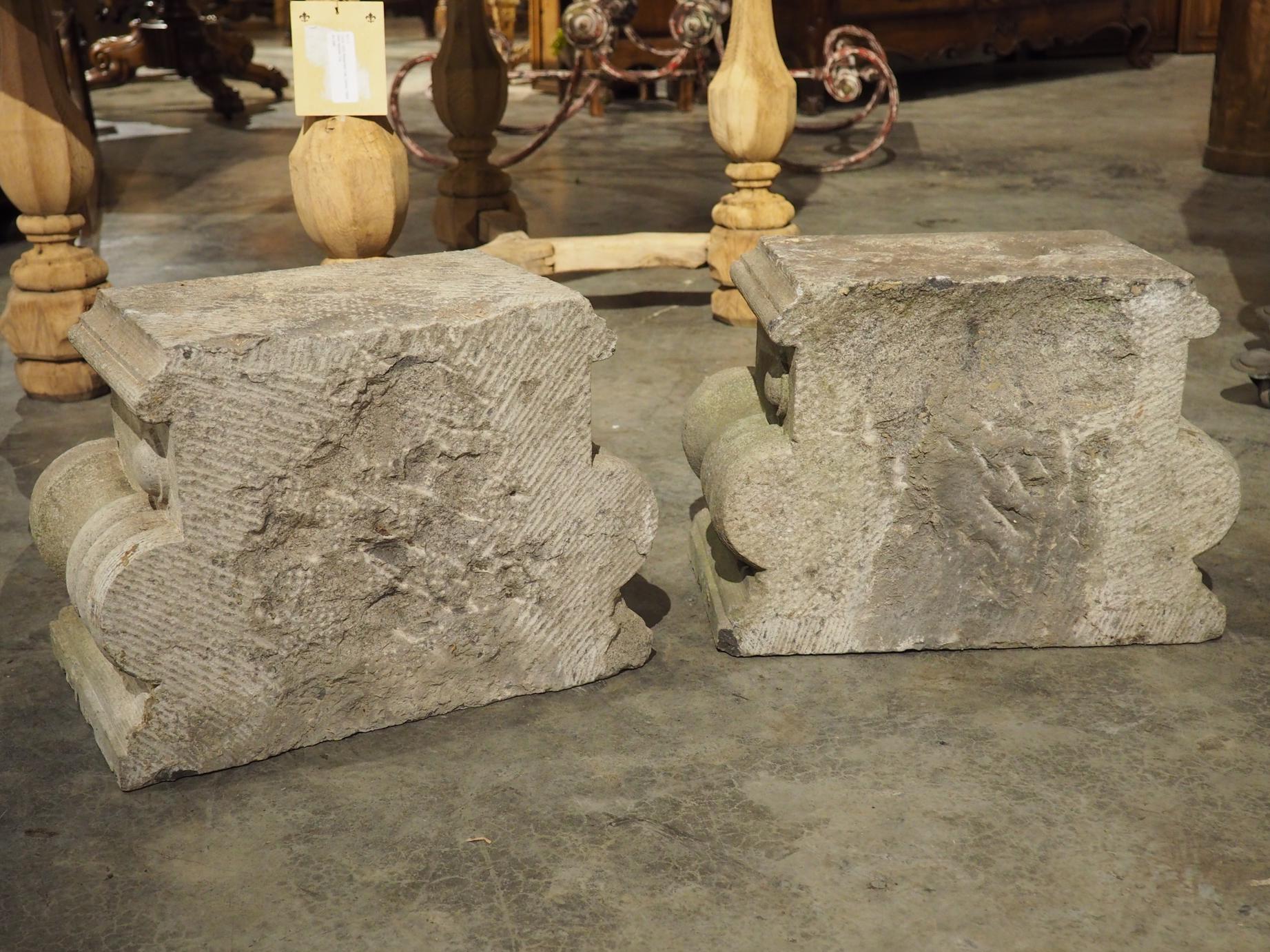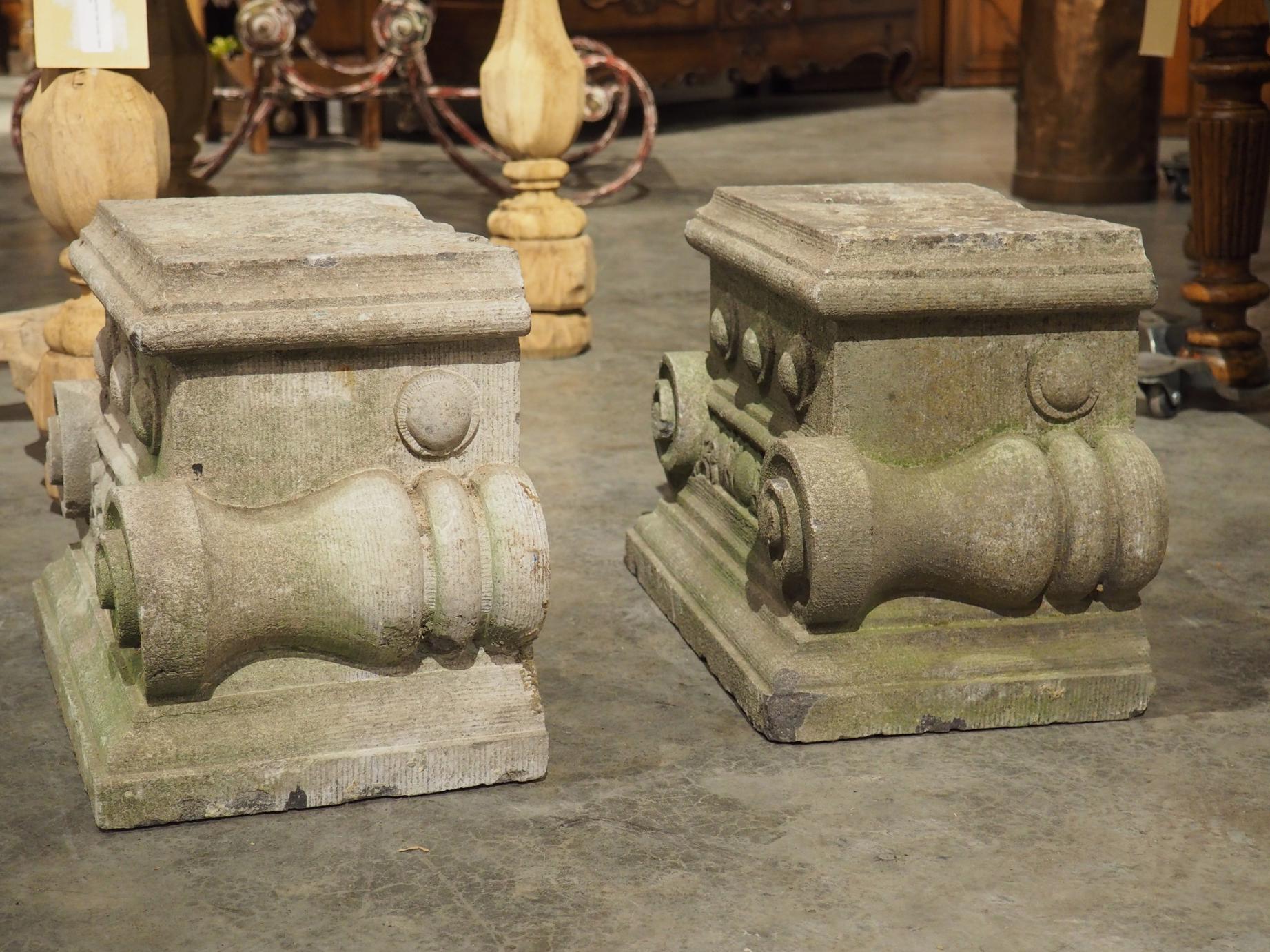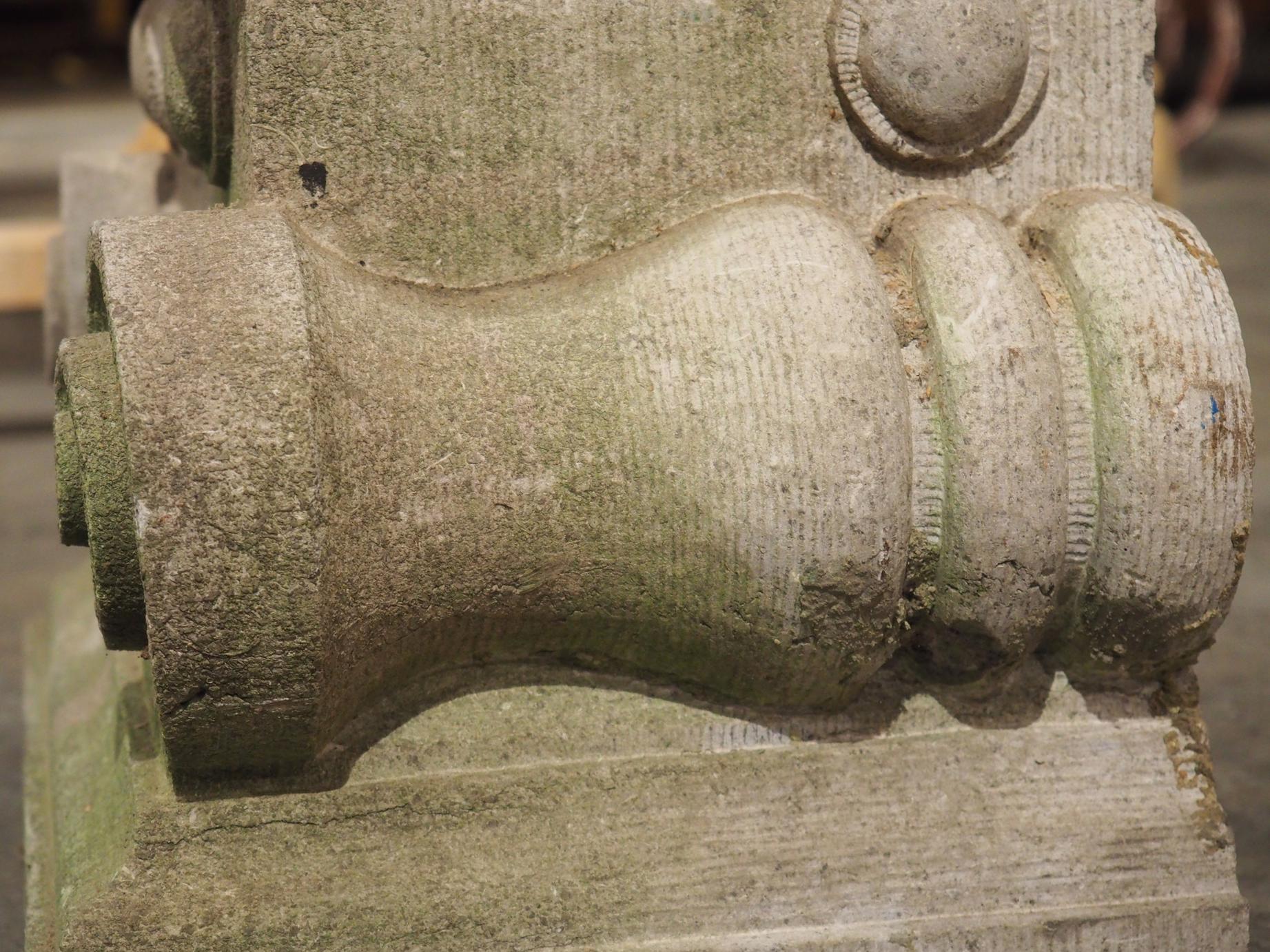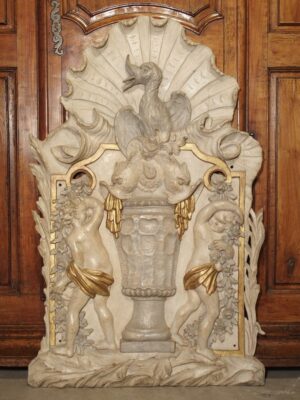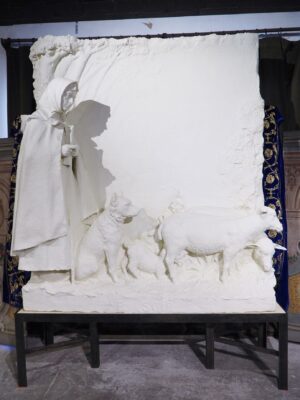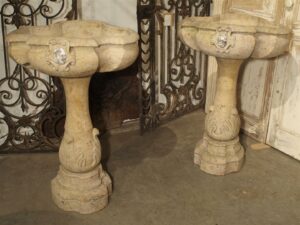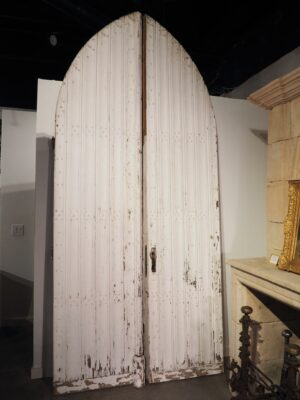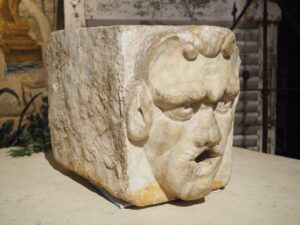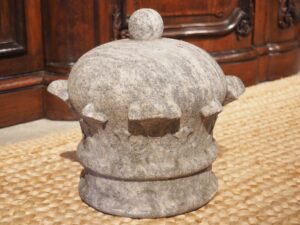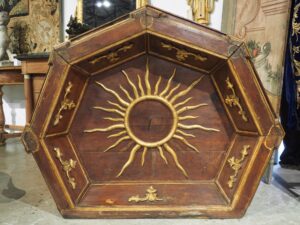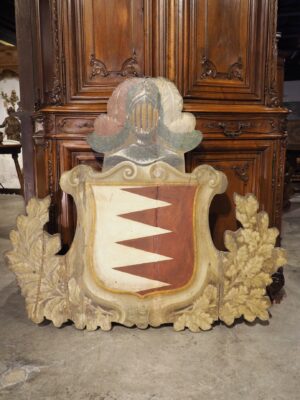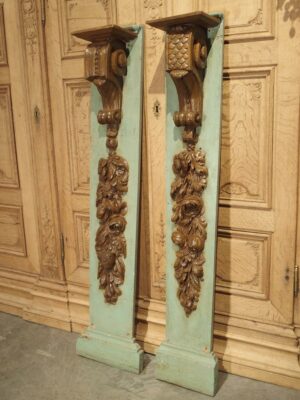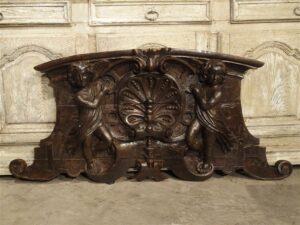Hand-carved in Belgium in the 1800’s, this pair of small bluestone capitals has been inspired by the Ionic order of ancient civilizations (Greece and Rome). Ionic architecture is known for utilizing volutes, which are the large spiral-like elements seen on the sides of our capitals.
On the front façade of each capital, the volutes flank a horizontal panel adorned with foliage, roundels, and other geometric shapes. Three concentric roundels protrude above a quarter molding that borders the foliate panel. The top of the capital (known as the abacus) has thick molding and cavetto cornices, mirroring the rectangular plinth at the base.
Each side has a roundel in the upper corner, above the turned edge of the volute. The back and tops are unfinished, indicating that these small carved Belgian capitals were probably once part of a building installation. The capitals can still be used architecturally, or they can be repurposed into lamps, used as pedestals for small statuary, or used as simple decorative items.
CONDITION: Good antique condition with wear commensurate to age and use, including acceptable minor losses. Stone is a natural material that can change color with exposure to the elements, as these capitals have developed a highly desired green and dark gray patina.



